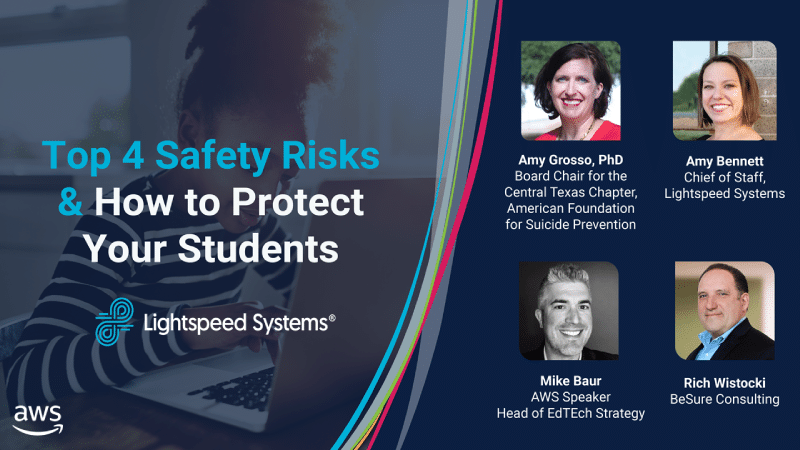
What can districts do to improve student mental health and their well-being? In this webinar, you will gain insights from subject matter experts on the top four risks students are facing online and how districts can help their students as the digital classroom evolves.
Our expert panel includes speakers from the American Foundation for Suicide Prevention, an expert child cybercrime detective, and an educational technology strategist from Amazon Web Services (AWS). Our esteemed panel talked about:
- The link between unmanaged mental health and violence and the importance of early intervention.
- Examples of prevention-type programs and emerging concerns to prepare for.
- Indications of suicidal behaviors or thoughts along with self-harm prevention programs that can help.